HOME | ABOUT US | MEDIA KIT | CONTACT US | INQUIRE
HOME | ABOUT US | MEDIA KIT | CONTACT US | INQUIRE
It’s a Top Doctors moment: When the diagnosis comes in, when you stare into the face of a serious health issue or physical impairment, one that could affect not just you, but your family and your livelihood, it’s natural to ask, “Who’s the best doctor to treat this?”
Note well: The answer to your question will NOT come from a Google search. The Internet has become a cesspool of sites that purport to offer information on the quality of physicians in this area. As a practical matter, the advice gleaned from most of those sites is worth exactly the price of the search. And forget what Uncle Lester or Aunt Sally had to say about their procedures—their lack of a medical degree says enough about their qualifications for recommending a physician.
No, the best way to find the best doctor is by asking one of the best. And for 18 years, Ingram’s has done just that with our Top Doctors feature. We’ve recognized more than 150 extraordinary physicians to date, and each year, we go back to that ever-widening pool of talent to ask: If it were you, whom would you seek out for treatment?
Their recommendations are just the starting point for our process to select each year’s class of Top Doctors. This year, we welcome into the fold eight medical professionals with reputations for being gifted, compassionate providers of health care. These are physicians that are sought out by other physicians.
This year’s honorees hail from such varied specialties as orthopedic surgery, cardiology, internal medicine, infectious diseases and transplant surgery, as well as general fields of family practitioner and hospitalist. Together, they help make Kansas City a center for exceptional health-care delivery.
Congratulations to these fine physicians, those we’ve spotlighted in previous years, and to all the nominees for Top Doctors recognition this year.
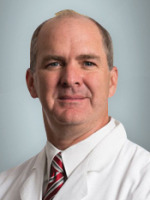 James O’Brien
James O’BrienCardiovascular Surgeon
Children’s Mercy Hospitals and Clinics
His father’s experience as a doctor made a big impression on James O’Brien. “I got to see how he would interact with others, people who was seek out his advice” as a specialist in internal medicine, O’Brien says. When he twinned that influence with his own natural curiosity about what makes people tick—literally—a career in surgery seemed almost pre-ordained.
“I enjoyed trying to understand how things work, how machines tick, or computers, and the most complex machine out there is the human body, and the challenge is how fix things that go wrong in it,” says O’Brien, a cardiovascular surgeon at Children’s Mercy Hospital. The surgical aspect of medicine, he says, “is a quick, rewarding aspect. Treating hypertension or diabetes is a slow-reward payback, but you get more instant gratification if you can go in and replace the broken part.”
Especially if you’re operating on the tiniest of patients—a third of those O’Brien treats are less than a month old, he says, and another third are less than a year old. “Congenital heart disease is the No. 1 birth defect out there, and the patients can be pretty complex,” he says. “What’s attractive is the variety of problems you treat. I can go a couple of weeks and not do the same operation twice”
The key to successful treatment of such tiny charges, he said, is the willingness to set your ego down and be part of a team. “The problems of these children can be complex, and it takes a multidisciplinary team to take care of them,” O’Brien says. “Being part of that team is rewarding, and it’s evolved. We’ve strived in the last few years to develop that multidisciplinary approach. Whether you’re a surgeon, cardiologist, anesthesiologist, we’re all under the same umbrella, working in a coordinated, collaborative fashion.”
Treating high-risk patients, he says, is particularly gratifying. “It sounds corny, but the best part of my day is coming out of the operating room and telling parents everything went well and their child is going to be fine. It’s a constant reinforcement for me: This is why I went into this.”
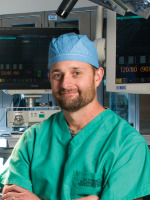 Timothy Schmitt
Timothy SchmittTransplant Surgeon
University of Kansas Hospital
To the patients—those who get their lives back after transplant surgery—Tim Schmitt may be a hero. But the hero has heroes of his own: “All patients are inspiring, in different ways,” says Schmitt, who plies his trade for the University of Kansas Hospital, “but the real heroes in my field are the donors and the donor families. Without them, it would be impossible for my field to exist.”
That’s a level of humility common for specialists who literally hold their patients’ lives in their hands, and who know that nobody in their line of work bats 1.000. Still, Schmitt likes the odds of success in what he does.
“Organ transplantation is ahead of the curve when it comes to quality, outcomes and oversight,” he says, and the intense regulation of that practice helps yield those successes, each of which is important when you consider the underlying math: “There are 12,000 people on the liver transplant list nationwide, and only about 6,000 liver donors a year,” Schmitt says, a calculation with morbid overtones. He’s not shy, however, about how that should be addressed: “It should be the responsibility of hospitals and their medical staff to address these issues in the public domain,” Schmitt says. “Some areas of the country have a negative impression about organ donation and transplantation and it is our job to improve public awareness and dispel any myths citizens may have.”
His interest in medicine was piqued in high school by a pair of knee surgeries, and orthopedics was an early interest, thanks to the influence of his surgeon. During medical school at Creighton University, a rotation in surgery offered a compelling mix of complexity and challenge. His initial goal of cardiothoracic surgery flipped to abdominal transplant during his surgical residency at Mayo Clinic-Jacksonville. “Not only is the surgery technically advanced, the clinical care is complex, and I was inspired by the dramatic affect it had on people lives,” Schmitt says.
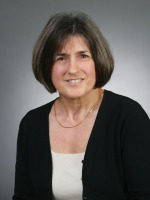 Marie Delcambre
Marie DelcambreInternist
Kansas City Internal Medicine
The science of it, the physiology and the intellectual challenge, says Marie Delcambre, called her to a career in medicine. Once there, she found another layer of appeal: “More importantly now,” she says, “is the personal connection with my patients and the difference that can make in their lives.”
For her, the playing field is internal medicine. “I love internal medicine because it is the only field that is truly in a position to prevent diseases and illnesses, not just detect and diagnose diseases,” she says. That entails educating patients on how to get and stay healthy, as well as treat those who aren’t. That’s why she believes her work “is the most challenging field of medicine—because it requires the widest breadth of knowledge of all the subspecialties.”
A good internist, she says, sifts through a wide array of symptoms, often involving several organ systems, and comes up with both a diagnosis and a plan of action. “An internist is also the lynch pin for all the subspecialists interacting with the patient,” Delcambre says, “and often I spend a good deal of time explaining and guiding patients through difficult treatments and decision points. I get to know my patients’ personal values and goals because they typically turn to me for advice and guidance when subspecialists make recommendations on care.”
She came to Kansas City 30 years ago, after earning her medical degree from Tulane’s School of Medicine in New Orleans, interning at Harvard University, and serving a residency at what is now Beth Israel Deaconess Hospital. Today, her passion for the profession is kindled by the way technology is changing health care, in particular with what she calls an “explosion of relatively cheap and widely available self-monitoring devices. In the old days, the only widely available patient self-monitoring device was a blood sugar meter,” she says. “But now with various smart phone apps and other devices, my patients now have the ability to routinely check their heart rhythm, measure their exercise activity and sleep patterns, and scan bar codes that assist in grocery shopping and nutrition assessment, to name just a few.”
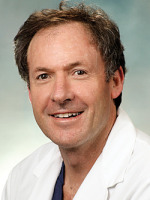 Brian Friedman
Brian FriedmanCardiologist
Cardiovascular Services
Olathe Health System
His formal education—medical school, internship, residency and fellowship—came in Johannesburg, in his native South Africa. But Brian Friedman’s most meaningful learning experience as a physician came with just a knock on a door. “I was a very young, inexperienced physician,” he remembers, and the case entailed an elderly woman who had suffered a massive stroke. Chances of recovery, he’d told her family at the hospital, were remote, but they were adamant that they would take her home and care for her.
A few months later, they called and asked him to come by the house. “The patient,” he says, “answered the door. That moment taught me the importance of loving and compassionate care; it made me humble and taught me humility. And it taught me the resilience of the human body, its ability to recover against all odds.
Compassion, humility and resilience: I use all three as guiding lights for my career to this day.”
Inspired as a boy by a story that made headlines around the planet—the world’s first heart transplant, performed in Cape Town, South Africa, in December 1967—young Friedman followed that excitement to a career in medicine.
He’s been in the U.S. for 24 years, having left his homeland because he didn’t want his children growing up in a country that, at the time, practiced apartheid. He’s board-certified in cardiovascular disease and interventional cardiology, and works in Olathe Health System’s Cardiology Services practice, where he signed on after a seven-year stint at the University of Kansas Hospital.
The rewards of his work, he says, are grounded in their immediate return. “I chose interventional cardiology because it’s intellectually stimulating, technically demanding and challenging,” he said. “One thing I really like about it, there’s almost instantaneous gratification from an operator’s perspective. You get a result almost immediately, and that’s particularly important with a heart attack or opening blocked artery—the patient is critically ill one moment and relatively stable the next.”
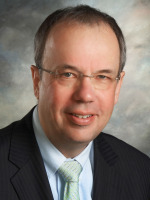 Scott Folk
Scott FolkInfectious Disease Specialist
Heartland Regional Medical Center/
Mosaic Life Care
He’s got about 166 episodes to go before he catches up with “House,” but if you saw his appearance on Animal Planet’s installment of “Monsters Inside Me” last fall, you know that Hugh Laurie has nothing on Scott Folk—and Folk wasn’t acting, he was the real deal. A specialist in infectious diseases for Mosaic Life Care, which operates Heartland Regional Medical Center in St. Joseph, Folk earned a bit of fame for that broadcast (still available on YouTube.com), which featured the story of a Missouri teen who developed a lungworm infection after eating undercooked crawdads.
An even bigger contribution to medicine may have come with his role in the discovery of what would become known as the Heartland Virus, a tick-borne malady identified in 2012, based on his work with two Missouri farmers. “It was a completely new virus never seen before, first new human virus in 19 years, at the time,” says Folk. He was co-lead author, with a team from the Centers for Disease Control and Prevention in Atlanta, on a study published in the New England Journal of Medicine that year.
It’s the kind of detective work that intrigues Folk, a native of Reading, Pa., who earned his medical degree at Albright College in nearby Philadelphia, then did residency and practice internal medicine around the state before securing a fellowship at the Mayo Clinic in 1987. He finished there in 1990, went back to his home state for a while, then in 1991 went to Tallahassee, Fla., where he was the only infectious disease specialist in that college town.
The near-tropical climate there was enough to inspire Folk and his bride—“I got married the day I turned 40, literally,” he says—to seek a place with four distinct seasons. The opportunity presented itself in St. Joseph, and he jumped at it.
What led him to his specialty? One was the intellectual rigor required to develop expertise in microbiology, cell biology and pharmacology. The other was variety: “Infectious-disease physicians,” he says, “treated the whole patient and not just one organ.”
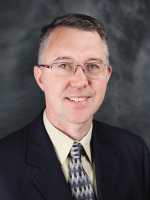 Todd Beardman
Todd BeardmanHospitalist
North Kansas City Hospital
Coming out of med school at UMKC, Todd Beardman set his sights on a career as a pediatrician. “In my fifth year of medical school, I did a pediatrics rotation, and I absolutely loved it,” he recalls. And he married a pediatrician. And then they had a couple of young ones of their own. “We were both in our own practices, and life got complicated and busy,” Beardman says, “so in 2005, I simplified things and became a hospitalist. It’s coming up on 10 years now, and it’s been hard to leave that, but I tell people that I had to give up taking care of other people’s kids to take care of my own,” he says.
The switch from a particular focus on one type of patient to the anything goes rounds of a hospitalist, he said, “has been a perfect fit for me personality-wise, because I’m in charge of my time. I need to see all the patients during the day, but if someone needs and extra five or 10 minutes, even 30 minutes, I can give that to them without worrying about backing up a whole office.”
A hospitalist is something like health-care delivery’s utility infielder. “We are acting in place of their primary care physician in the hospital, trying to take care of them as their primary would if they were there,” Beardman says. “We’re interacting with specialists, acting on it if something goes wrong in the hospital. When I was in the practice, there are times I would be working at three different hospitals, and many times, I’d be at one facility, then something was going on at another and I needed to be there. Here, the fact that something happens in-house, something’s going on, you just go do it.”
Taking stock of his years in medicine, Beardman says “the things that reassure me I made the right decision, especially with the kids, are the kids that I attended delivery for early on in my career, who I would see later as they were growing. Just that growth, knowing you played a tiny part in that, that was really rewarding. I’ve since run across some parents of kids I took care of, and they tell me how old their child is, what he’s doing, and say thank you for taking care of them, that’s very rewarding. If I still practiced pediatrics, that would still be the thing that clinches it for me.”
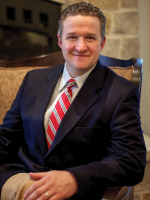 Jeffrey Salin
Jeffrey SalinOrthopedic Surgeon
Kansas City Bone & Joint Clinic
“My whole family is in business, so I thought I would be a business major, too,” Jeffrey Salin muses. “I would go into banking or something along those lines, and I started going down the business route.” It didn’t take. “I found it wasn’t for me. I took a year off of college and worked as an EMT in Los Angeles, and fell in love with it.” When he did go back to school at UCLA, it was with the goal of becoming a doctor. How’d that go with the suits in the family? “They were OK with it, but Dad was leery. He said it was a long row to hoe, a big commitment, and he was leery of how long the school work and training was, and whether I would make it.”
That was then. Now, Salin is an orthopedic surgeon with Kansas City Bone & Joint Clinic, relishing the opportunity to lay hands on a patient and turn that life around. It’s not like heart surgery, transplantation or oncology, where life itself may be at stake. Salin’s work has to do with what patients do with that life. “I really enjoy the quality-of-life aspects,” he said. “This is one of the few specialties that affects the quality of a patient’s life—relieving pain, getting patients back to work. There’s lots of focus in medicine on quantity, how long you live, but the sheer quality of life is what piqued my interest about orthopedics. Obviously, I enjoy the tools I get to use; it’s the funnest job in medicine.”
His favorite procedure is the total hip replacement, largely because of the quick time frames for recovery. “It’s very rewarding to watch patients, even a day after surgery, be almost pain free, or rid of arthritis pain they’ve lived with for years,” Salin said. “Just to see that satisfaction and their optimism and hope in life come back because their pain is gone.”
Case in point: A woman who came into the office recently, sat down, bent over and tied her shoes. “She sat up with tears in her eyes,” Salin said, “and said, ‘I haven’t been able to do that in 15 years.’ It was an eye-opener for me. What a small task we all take for granted every day, but for her it was such a big deal to tie her shoes like a normal person. Those kinds of stories stick with you.”
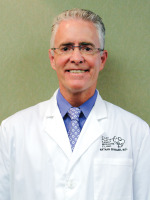 Nathan Granger
Nathan GrangerFamily Practitioner
Clay Platte Family Medicine Clinic
The practice of family medicine came calling in Nathan Granger’s life three decades ago, when the graduate of KU’s School of Medicine headed to Wichita for his residency in that field. Then the business of family medicine came calling, and he went back to school—this time, for his MBA, from Rockhurst University. That armed him to deal with that complex and rapidly changing side of health-care delivery.
Granger teamed with Richard Ortiz, another physician, to launch Clay Platte Family Medicine in 1995. A few years ago, the practice was recognized as the first in Kansas City to adopt a business model known as the patient-centered medical home.
“It makes health-care delivery safer, more coordinated,” Granger said. “It’s improving the quality of health care and it’s lowering costs in Kansas City and around the country. It’s working, but it’s like any project or change: it’s an evolving process. It’s not an end-all.”
The model starts with a team-based approach, and the primary care physician is a sort of quarterback who works with other health-care professionals interacting with each patient. That leads to coordinated, accessible, high-quality care. One example of the change: “The follow-through on referrals,” Granger said. “If we send a patient to a specialist, we’re making sure he gets there. Before, if the patient didn’t go, we wouldn’t know.
Now, we’re tracking referrals, we offer extended hours and better access, so if a patient gets sick, he can get into the office, and that reduces hospitalizations,” which helps reduce overall health-care expenses.
That can mean more operating up-front expenses, but overall, costs can drop because patients are more active in their own care. “The majority of health-care problems are not from physician’s end,” Granger says. “But we are being held accountable for the fact that patients are not taking medications, not eating well, not taking the right doses of medications. We have stepped up to take a leadership role in those types of things.”